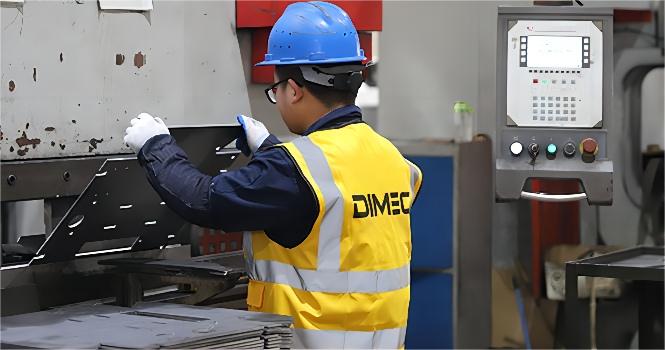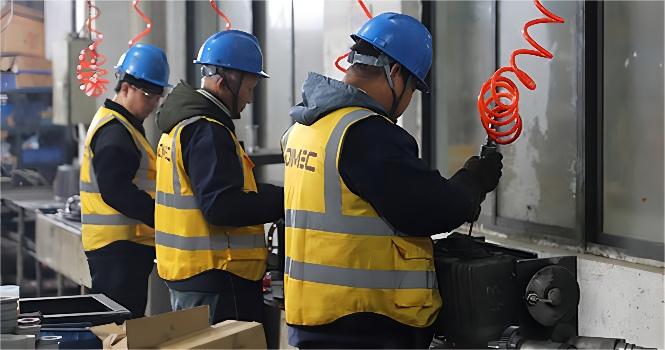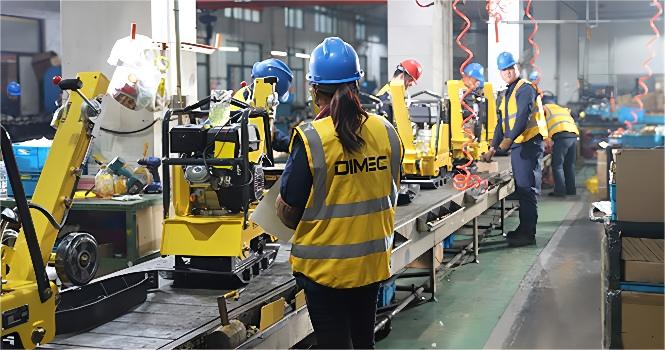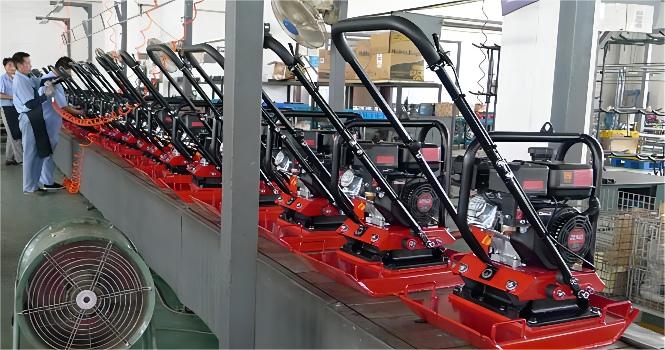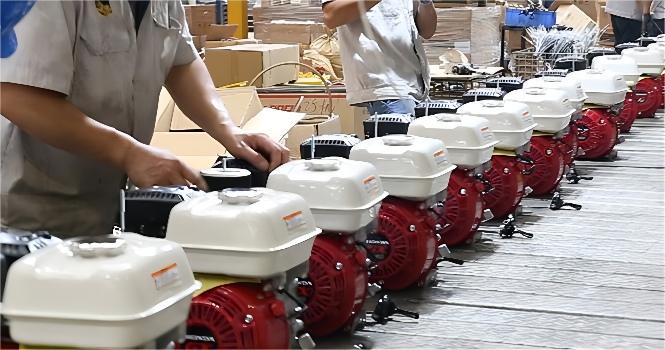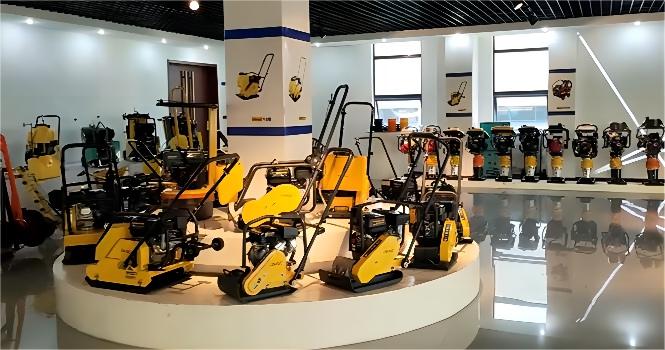Walk Behind Roller PME-R600
When you are looking for a walk behind roller, we can assist you in selecting the most suitable compactor roller for your business.
Walk Behind Roller PME-R600
The PME-R600 Walk Behind Roller is designed to offer exceptional compaction performance in both small and medium-scale construction projects. With its dual 426 mm diameter by 600 mm width rollers, it provides efficient and uniform compaction across a variety of surfaces. This walk-behind roller is ideal for road repair, foundation preparation, and other construction tasks that require precision and ease of use in tight or confined spaces.
Powerful Performance
Powered by a Honda GX270 or Changchai R180 engine, the PME-R600 delivers robust power and reliability for a range of compaction needs. The air-cooled, 4-stroke petrol engine ensures smooth, consistent operation throughout its service life. With a centrifugal force of 20 KN and a vibration frequency of 75 Hz, the PME-R600 is designed to handle demanding compaction tasks, including asphalt, gravel, and soil compaction. Its nominal amplitude of 0.5 mm guarantees thorough and effective compaction, even in more granular materials, ensuring solid and stable surfaces.
Versatile Application
The PME-R600 Walk Behind Roller is ideal for various applications, from road repairs and patchwork to foundation work and small infrastructure projects. The dual wheels are equipped with automatic vibration control, delivering dual-wheel vibration for enhanced compaction efficiency. This feature ensures even and consistent results, especially when working in narrow or confined spaces. With a gradeability of 25°, the PME-R600 performs well on slopes, providing flexibility in a wide range of terrain conditions, while the travel speed of 0-4 km/h ensures smooth maneuvering for precision control.
Built to Last
Durability is at the core of the PME-R600’s design. Crafted from high-quality, long-lasting materials, this walk-behind roller is built to withstand the rigors of continuous, heavy use. The 20L water tank capacity helps maintain optimal performance by reducing surface friction during compaction, while the hydraulic pump and motor system ensures smooth, reliable operation. Its rugged construction and efficient design ensure that it can handle demanding jobs, reducing maintenance requirements and minimizing downtime.
Applications
- Road Repair and Maintenance
- Foundation and Footing Preparation
- Asphalt, Gravel, and Soil Compaction
- Compaction in Narrow or Confined Spaces
- Small to Medium-Scale Roadworks
- Driveways, Pathways, and Landscaping
- Subgrade and Soil Stabilization Projects
With its reliable power, double-wheel vibration system, and easy-to-maneuver design, the PME-R600 Walk Behind Roller is the perfect choice for contractors needing efficient compaction in tight spaces or smaller projects. Whether you’re working on road repairs, foundation work, or landscaping projects, the PME-R600 provides durable and high-quality results in any environment.
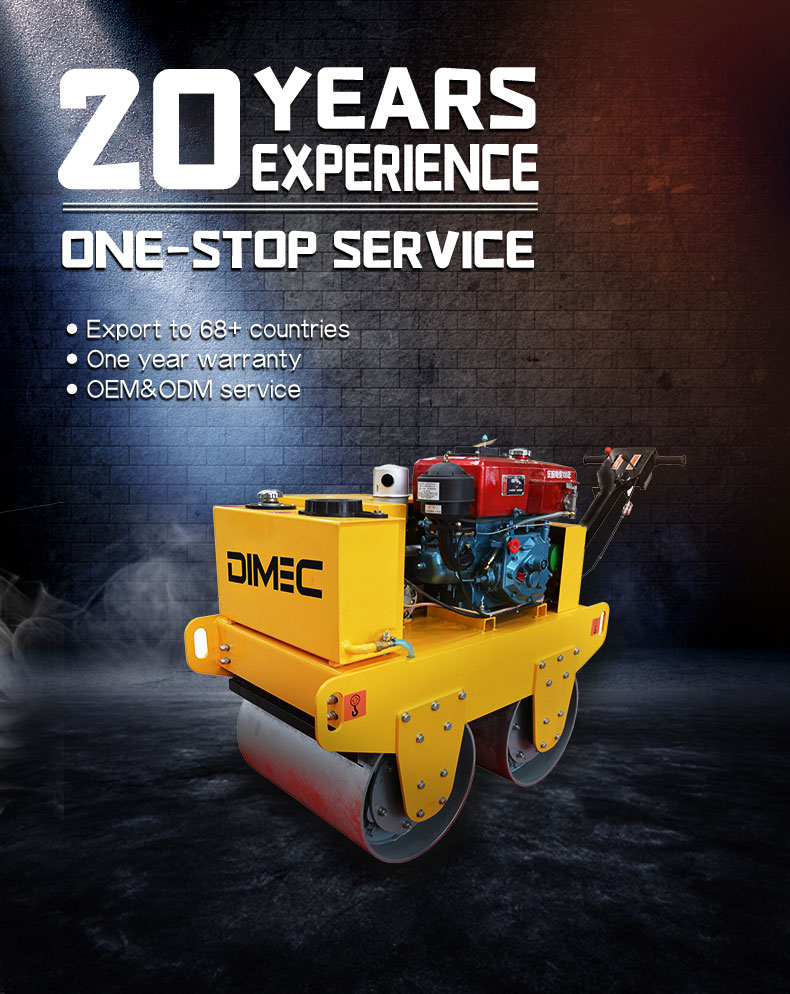
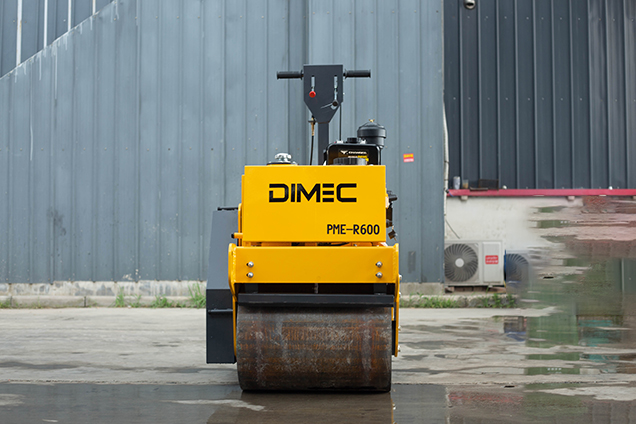
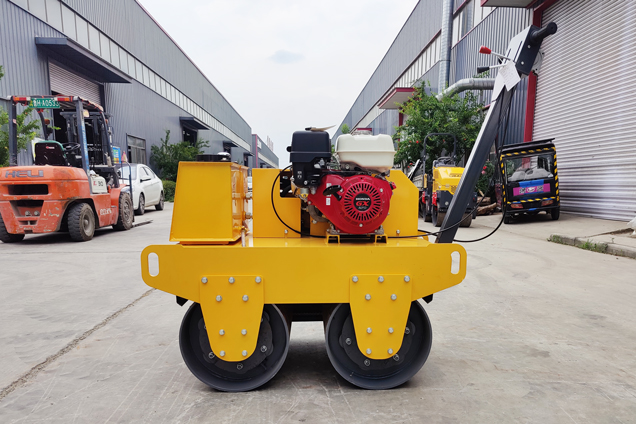
Key Specifications
| Model | Walk Behind Roller PME-R600 |
|---|---|
| Engine | Honda GX270/ Changchai R180 |
| Roller size [diameter x width] | 2xφ426x600 mm |
| Drive type | Hydraulic pump, hydraulic motor, double wheels drive |
| Vibration type | Automatic, double wheels vibration |
| Nominal amplitude | 0.5 mm |
| Vibration frequency | 75 Hz |
| Centrifugal force | 20 KN |
| Water tank capacity | 20 L |
| Gradeability | 30° |
| Travel speed | 0-4 km/h |
| N.W./G.W. | 550/570 kg |
| Package size | 135x85x120 cm |
ADVANTAGE
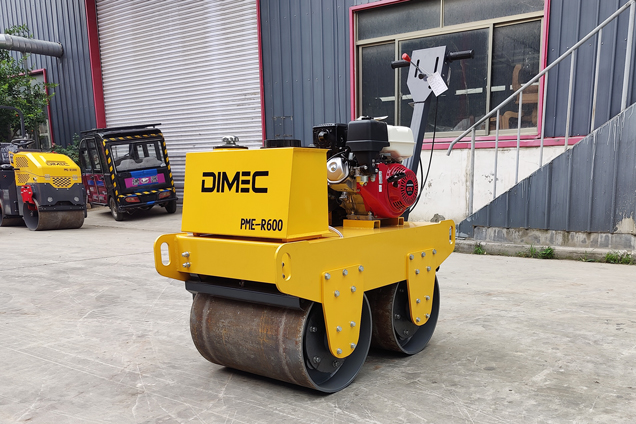
Compact Size
With its compact design and well - positioned handlebars, the roller offers enhanced maneuverability. This allows operators to easily navigate and control the machine, even in tight spaces.
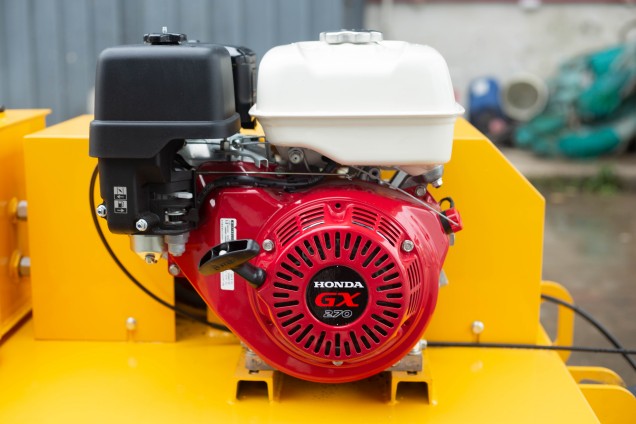
Powered Engine
The roller is equipped with a robust Honda GX engine. This engine provides reliable and efficient power, ensuring smooth and consistent compaction performance. Enhanced Maneuverability
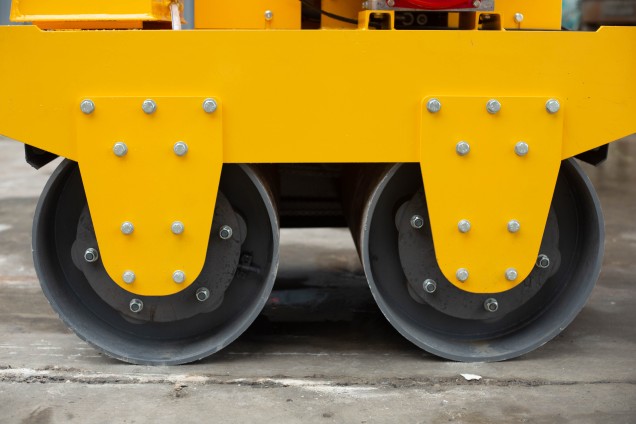
Dual Steel Drums
The roller features two steel drums at the front. These drums work together to compact soil, asphalt, and other construction materials more efficiently. The dual - drum design ensures a more even compaction surface, especially on larger areas.
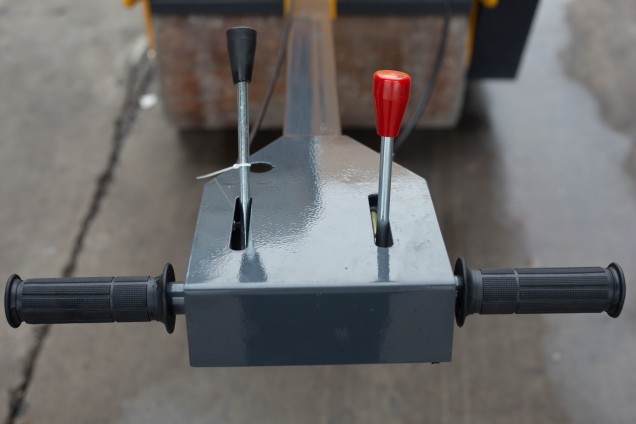
Ergonomic Handle and Controls
The roller has an ergonomic handle with intuitive controls. The handle is designed for operator comfort, and the controls, including levers and buttons, are easily accessible, allowing for precise operation.
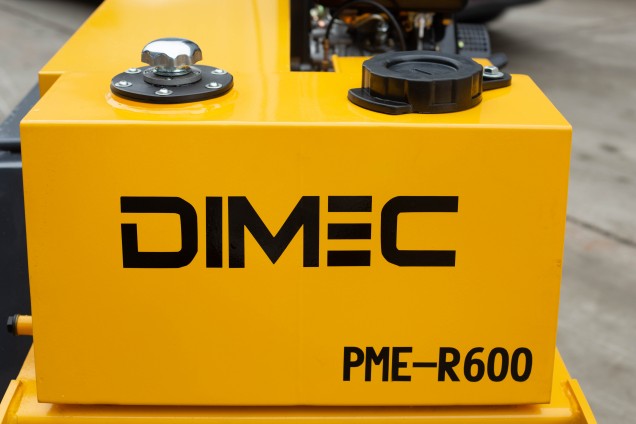
Water Tank and Hose
There is a water tank integrated into the roller, along with a hose. This setup is used for wetting the drum, which helps prevent materials from sticking to it during the compaction process.
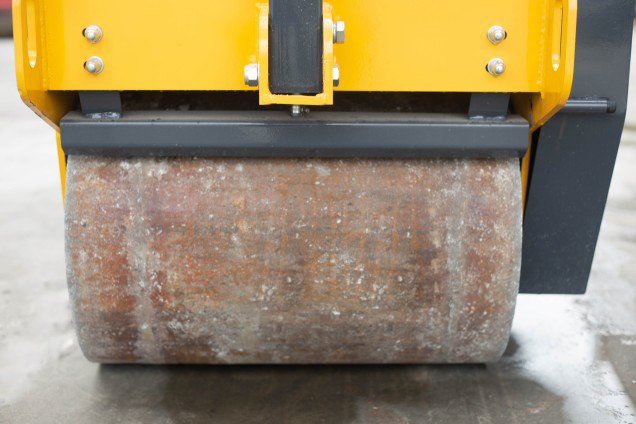
Drum with Scraper
The roller is equipped with a drum that has a built - in scraper. The scraper helps to remove any material that may stick to the drum during the compaction process, ensuring that the drum remains clean and effective. This feature is crucial for maintaining the quality of the compaction work.
QUESTIONS & ANSWERS
For small construction projects, a compact single-drum roller with a drum width of around 24 to 36 inches is usually sufficient. These rollers are lightweight, easy to maneuver, and perfect for jobs like driveway or sidewalk compaction.
Single drum rollers are ideal for smaller spaces and provide greater maneuverability, while double drum rollers offer superior compaction for larger areas. If you’re working on a small, confined area, a single drum is often enough. For larger, more expansive projects, a double drum roller provides more consistent results.
Both weight and drum size play crucial roles in compaction. Weight determines the pressure the roller exerts on the surface, while the drum size affects the area covered. It’s essential to balance both factors for the most efficient compaction. For example, if you’re working on a heavy-duty surface, a heavier roller with a larger drum may be necessary.
While walk behind rollers can be used on various surfaces, it’s important to choose the right type of roller for each material. Pneumatic rollers are ideal for asphalt, while static or vibratory rollers are better suited for compacting soil or gravel. Always check the surface compatibility to ensure optimal results.
To assess the terrain, consider factors like the ground’s hardness, level of unevenness, and soil type. For rocky or uneven terrain, a heavier roller with higher drum amplitude may be required to achieve proper compaction. For smoother or more stable surfaces, a smaller, lighter roller might be sufficient.
Pneumatic rollers rely on air-filled tires to provide compaction, which is gentler on surfaces like asphalt. They are ideal for achieving uniform compaction without causing damage. Static rollers, on the other hand, rely purely on the weight of the machine for compaction. They are more suited for rougher or firmer surfaces like gravel or soil.
Other Similar Products
20+ Years of Experience
Construction Machine Manufacturer
Professional manufacturer of small construction machinery, main products include plate compactor, tamping rammer, road roller,floor saw, concrete vibrator, generator etc.
Walk Behind Roller
A Walk Behind Roller is a type of compacting equipment commonly used in construction, landscaping, and road maintenance projects. These rollers are designed to improve the density of soil, gravel, or asphalt by applying pressure through their heavy cylindrical drums. Walk behind rollers are compact, maneuverable, and efficient, making them ideal for smaller areas and tight spaces where larger machinery would be impractical.

How Do I Choose the Right Size Walk Behind Roller?
Introduction to Walk Behind Rollers
When it comes to construction and landscaping projects, a walk behind roller is an essential piece of equipment for compacting surfaces such as gravel, soil, asphalt, or other base materials. These compactors help ensure the ground is firm and level, making the final surface ready for further work, such as paving or laying foundations. But how do you choose the right size walk behind roller for your specific needs? This article will guide you through the key factors to consider when selecting a walk behind roller, ensuring that you make an informed decision that enhances the efficiency and effectiveness of your project.
What is a Walk Behind Roller?
A walk behind roller is a type of compaction machine that you manually control, typically by walking behind it while guiding its movement. The roller consists of a large drum or drums that rotate as the machine moves forward, pressing down on the surface to compact it. This compaction is crucial for creating a solid foundation for a variety of construction projects, including roads, parking lots, sidewalks, and even athletic fields.
Understanding Walk Behind Rollers
Before diving into the specifics of selecting the right size, it’s important to understand the different types of walk behind rollers and how they work. Walk behind rollers are commonly used for small to medium-sized jobs where maneuverability and control are essential. Depending on the project, these machines can range from lightweight, single-drum models for smaller jobs, to more robust double-drum rollers for larger, more demanding tasks.
Why Are Walk Behind Rollers Used in Construction?
Walk behind rollers are used to compact surfaces, reducing air pockets and creating a stable base. Whether for asphalt paving, subgrade preparation, or soil stabilization, a well-compacted surface improves the durability and load-bearing capacity of the area being worked on. These rollers are especially useful for confined or irregular spaces, like residential driveways, parking lots, and small road repair projects, where larger equipment cannot fit or may be too cumbersome.
Factors to Consider When Choosing the Right Size
When deciding on the right size walk behind roller for your project, several factors come into play. Choosing the wrong size can result in inefficiency, unnecessary wear on the equipment, and even poor compaction. The following are the key considerations to keep in mind:
Weight and Load Distribution
The weight of the roller directly impacts its compaction ability. Heavier rollers tend to provide better compaction as they exert more pressure on the surface. However, if the roller is too heavy for your project, it can cause damage to softer or more delicate surfaces. Always consider the type of material you’re compacting and the weight-bearing capacity of the area to determine the ideal roller weight.
Roll Width: A Key Consideration
The width of the roller drum affects how much surface area can be compacted in a single pass. A wider drum will cover more ground in less time, but it may not be suitable for smaller, confined spaces. Conversely, a narrower drum offers more precision but requires more passes to cover the same area. Select the drum width that best matches your project’s scale and the space you need to work within.
Drum Size and Its Impact
The size of the drum plays a pivotal role in determining the effectiveness of your compaction. Larger drums are ideal for heavy-duty jobs, providing deeper compaction with fewer passes. Smaller drums are better suited for lighter work, offering easier maneuverability and more detailed control in confined areas.
Benefits of the Right Size Walk Behind Roller
Selecting the correct size walk behind roller ensures a higher-quality finished product, with better compaction results. The right choice also reduces strain on the equipment and operator, making the job faster and easier.
Enhanced Compaction Efficiency
A properly sized roller will provide optimal compaction for the surface you’re working on. Using a roller that’s too small may result in inadequate compaction, while one that’s too large could cause unnecessary wear on the machine and surface. Matching the roller to your specific job ensures maximum efficiency.
Reduced Wear and Tear on Equipment
Choosing a roller that matches the project’s needs helps extend the lifespan of the machine. Overloading a roller or using one that’s too large for the task can put undue stress on the components, leading to more frequent repairs and a shorter machine life.
Types of Walk Behind Rollers
Understanding the different types of walk behind rollers available will help you narrow down your choices based on the nature of your project.
Single Drum vs. Double Drum Rollers
Single drum rollers feature a single drum at the front or rear, with a smooth or padded surface, while double drum rollers have two drums, one at the front and one at the back, that both contribute to compaction. Double drum models generally provide more consistent results and are better suited for larger projects, while single drum rollers are more compact and can maneuver through tighter spaces.
Pneumatic vs. Static Rollers
Pneumatic rollers use air-filled tires to achieve compaction, providing a gentler touch on the surface, which is ideal for fragile surfaces like asphalt or turf. Static rollers, on the other hand, rely on the weight of the roller itself for compaction, making them suitable for harder surfaces like gravel or soil.
How to Determine the Ideal Size for Your Project
The right size walk behind roller depends heavily on the specifics of your construction project. Here are some tips to help you assess the ideal size:
Evaluating Project Scope and Surface Type
If you’re working on a small-scale project like a driveway, a compact, lighter roller may be sufficient. For larger, commercial or municipal projects, such as parking lots or road repairs, a larger roller with greater weight and drum size would be more efficient.
Ground Conditions and Terrain
The type of terrain you’re working on will also dictate the roller size. For uneven or rocky surfaces, a larger, more powerful roller may be needed to ensure effective compaction. In contrast, flat and firm surfaces might be adequately compacted with a smaller, lighter roller.
The Role of Roller Weight in Compaction
Heavier rollers exert more pressure, leading to deeper compaction, making them ideal for large projects. However, they can be too heavy for smaller surfaces, potentially damaging the underlying material. Understanding the weight tolerance of your surface is essential for selecting the right machine.
Key Features to Look for in Walk Behind Rollers
When selecting a walk behind roller, it’s not just about the size. There are several features that can make your compaction job easier and more efficient. Understanding these features will help you get the most value from your investment.
Adjustable Drum Settings for Flexibility
One of the most important features to consider is the adjustability of the drum settings. Many modern walk behind rollers come with adjustable drum settings, allowing you to customize the machine’s performance depending on the surface type and desired compaction depth. Some machines offer variable drum speeds, while others have adjustable amplitude (the height of the drum’s vibration), which can be crucial for different types of work.
For instance, if you’re working on a softer material like asphalt, you may need a lower amplitude to avoid damaging the surface. For hard materials like gravel, a higher amplitude may be necessary to achieve the desired compaction. Having control over these settings can make your compaction process more efficient and help you achieve better results.
Engine Power and Performance
The engine power of the walk behind roller is another important factor to consider. Rollers with more powerful engines are typically better suited for larger, more demanding projects. A stronger engine will allow the roller to move more easily, cover larger areas, and handle tougher terrains. Conversely, smaller, lighter rollers with less engine power are ideal for smaller, less challenging jobs.
It’s also worth considering the fuel efficiency of the engine. If you’re working on a long-term project or in an area without easy access to fuel, an energy-efficient engine can save you time and money in the long run.
Common Mistakes to Avoid When Choosing a Walk Behind Roller
When purchasing or renting a walk behind roller, it’s easy to make a few mistakes that can lead to inefficiencies or even damage to your equipment. Here are some common errors to avoid:
Overlooking Surface Compatibility
One of the most common mistakes is not considering the surface you’re working on when choosing the roller. For example, using a roller designed for asphalt compaction on soil or gravel may not give you the results you need. Always make sure that the roller you select is compatible with the surface material. If you’re unsure, consult the manufacturer’s guidelines or seek expert advice.
Ignoring the Manufacturer’s Specifications
It can be tempting to choose a roller based on its size alone, but it’s essential to pay attention to the manufacturer’s specifications. These documents often provide critical details about the recommended uses, weight capacity, and operating conditions. Ignoring these specifications can result in poor performance and could even void your warranty if the machine is used improperly.
Conclusion
Choosing the right size walk behind roller is essential for achieving the best results in your construction or landscaping project. By considering factors like weight, drum size, surface compatibility, and engine performance, you can ensure that the roller you choose is well-suited to your needs. Remember, the goal is to find a balance between compaction efficiency and equipment longevity. Don’t be afraid to consult with manufacturers or industry experts if you’re unsure—getting the right roller will save you time, effort, and money in the long run.
Summary of Key Takeaways
- Understand the task: The type of work you’re doing (e.g., asphalt paving vs. soil compaction) will influence the size and features of the roller you need.
- Consider the surface type: Different surfaces require different types of rollers (e.g., pneumatic for asphalt, static for gravel).
- Balance weight and drum size: Heavier rollers provide better compaction, but the right drum width will ensure efficiency.
- Check for adjustable settings: Features like adjustable drum amplitude can improve performance based on specific project requirements.
- Avoid mistakes: Don’t overlook the manufacturer’s guidelines or surface compatibility when choosing a roller.
Final Tips for Selecting the Right Walk Behind Roller
- Always ensure your roller is suited for the specific terrain and material you’re working with.
- Opt for a model with adjustable settings if you anticipate working on varying surfaces.
- If you’re unsure, don’t hesitate to consult with experts or the roller manufacturer for tailored advice.
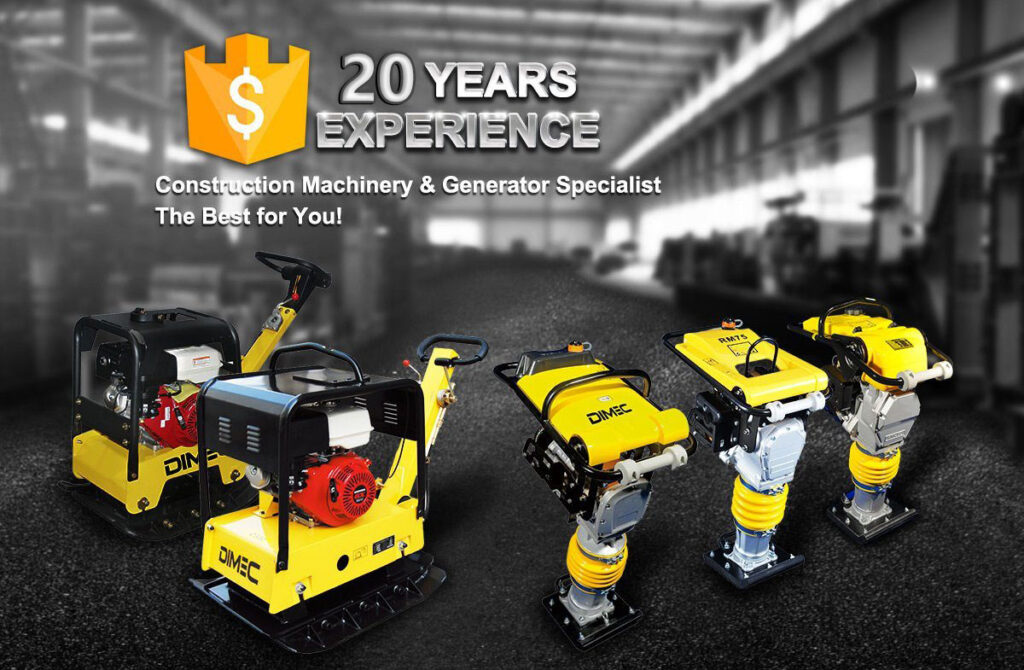
About Us
Wuxi Pinnacle Mechanical Equipment Co., Ltd. (PME) As a first-class specialty enterprise we serve global clients. PME specialize on production of plate compactor, tamping rammer, floor saw, concrete vibrator for global construction industry. We also produce engine, generator, and water pump. PME’s strengths are rooted from our strong team and rich resources.
We have complete production and assembly lines for different machines. There is a team of chief engineers, senior technicians and QC inspectors, equipped with a variety of finishing, spare parts inspection and product testing equipment, to safeguard production and innovation. Thus, we can control every step of production, from finish machining of spare parts, steel plate cutting and welding, spraying paint, all the way to product assembly. This results in effective product quality control.
With more than 20 years of exporting experience, PME has been exporting to over 68 countries and regions including North America, South America, Europe, Southeast Asia, Middle East, Africa. We also form strategic corporations with many multinational companies.
Factory Show
Let our expertise in custom Forward Plate Compactor take your projects to the next level.
Why Choose Us
Professional construction machinery manufacturer with OEM service
We are a leading manufacturer in the construction machinery industry, offering top-notch Original Equipment Manufacturer (OEM) services. Our commitment to innovation and precision engineering ensures that our machinery meets the specific needs of our clients, providing customized solutions that enhance efficiency and performance on the job site.
20 years production and exportation experience
With two decades of experience in production and exportation, we have built a strong reputation for delivering reliable and high-quality construction equipment worldwide. Our extensive knowledge and expertise in the industry enable us to understand the unique challenges of different markets, ensuring our products are tailored to meet global standards.
20+ types of construction site equipment are available for selection
We offer a diverse range of over 20 types of construction site equipment, catering to various industry needs. From heavy-duty machinery to specialized tools, our product lineup is designed to support every phase of construction, providing our clients with the flexibility to choose the right equipment for their projects.
10+ years QC monitor products quality
Our rigorous quality control processes have been refined over more than 10 years, ensuring that every piece of equipment we produce meets the highest standards. Our dedicated QC team meticulously monitors every stage of production, guaranteeing that our products deliver consistent performance and durability in the field.
8+ years experienced skilled workers
Our team comprises highly skilled workers with over 8 years of experience in the construction machinery industry. Their expertise and dedication are reflected in the precision and craftsmanship of our products, ensuring that every detail is executed to perfection.
8 workshops, 12 production lines
With 8 state-of-the-art workshops and 12 production lines, our manufacturing capabilities are designed to meet large-scale demands efficiently. Our advanced facilities allow us to maintain a streamlined production process, ensuring timely delivery of high-quality machinery to our clients around the world.
Unlock Superior Construction Efficiency with Our Expertly Engineered Machinery
Discover a world of advanced construction equipment tailored to meet the demands of modern job sites. With 20 years of industry experience and a commitment to quality, our machinery is designed to boost productivity and ensure reliability in every project. Explore our diverse range and experience the difference of precision-engineered solutions.
